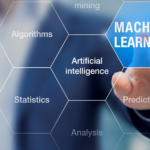This is the second post in a two-part series. Part One is available here. We are highlighting the shifting roles of IT with the emergence of machine learning based IT analytics tools.
Machine Learning Provides the Answers
The newest data science approach to managing and optimizing virtual infrastructures applies the AI discipline of machine learning (ML).
Rather than monitoring individual components in the traditional computer science way, ML tools analyze the behavior of interrelated components. They track the normal patterns of these complex behaviors as they change over time. Machine learning-based analytics tools automatically identify the root causes of performance issues and recommend the steps needed to fix them.
This shift to a data-centric, behavior-based approach has major implications that significantly empower IT professionals. IT pros will always need domain expertise in computer science. But what analytical skills will IT need to become effective in this new AI-driven world?
Unlike earlier analytics tools were general purpose or provided relatively low-level primitives or APIs, leaving IT to determine how to apply them for specific purposes. Early tools were largely impractical because they had limited applicability. Moreover, IT pros using them had to have a deep analytical background. New tools are much different. They allow IT pros to leapfrog ahead -to use advanced data science approaches without specialized training.  They automatically deliver fast, accurate solutions to complex problems like root cause analysis, rightsizing, or capacity planning.
They automatically deliver fast, accurate solutions to complex problems like root cause analysis, rightsizing, or capacity planning.
First, IT will shift their emphasis from diagnosing problems to avoiding them in the first place. Next, freed of the need to over-provision to ensure performance and reliability, they will look for ways to optimize efficiency. Finally, they will use ML tools to implement strategies to evolve and scale their environments to support their business’s operations.
And as IT pro’s mature their understanding and use of machine learning-based analytics tools, they will be on the forefront of building the foundation for automation and the future of the self-driving data center.